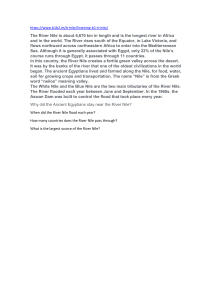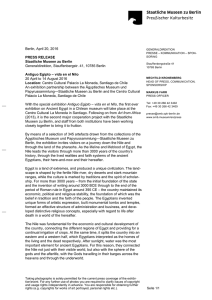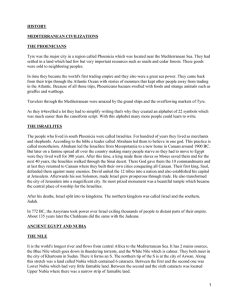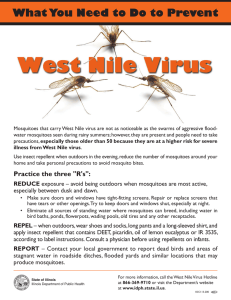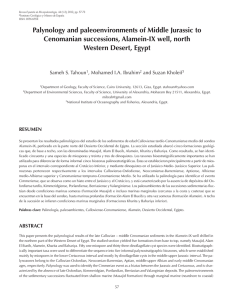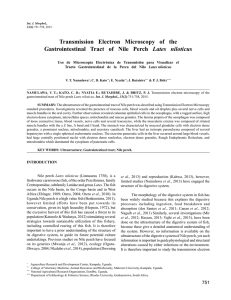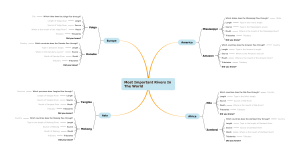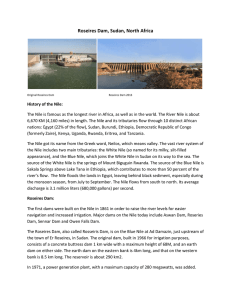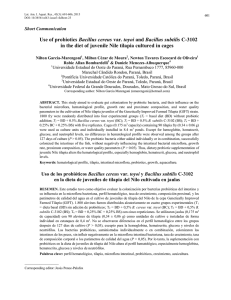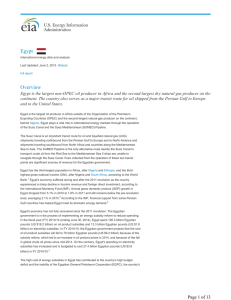The Nile: A River of Life
Anuncio
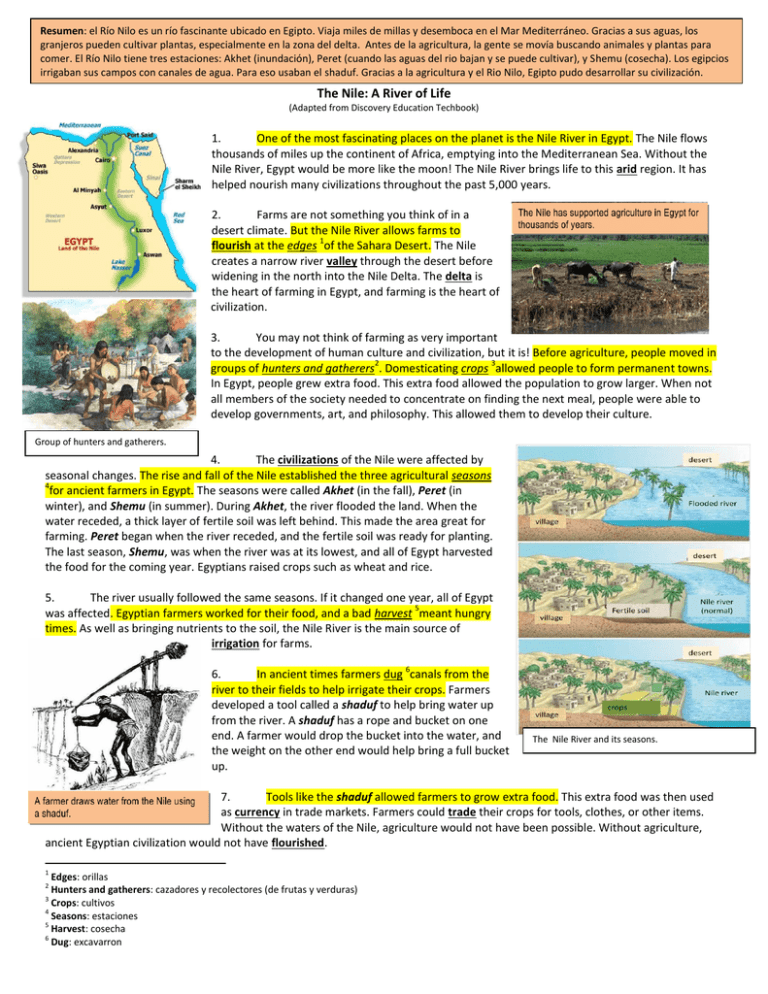
Resumen: el Río Nilo es un río fascinante ubicado en Egipto. Viaja miles de millas y desemboca en el Mar Mediterráneo. Gracias a sus aguas, los granjeros pueden cultivar plantas, especialmente en la zona del delta. Antes de la agricultura, la gente se movía buscando animales y plantas para comer. El Río Nilo tiene tres estaciones: Akhet (inundación), Peret (cuando las aguas del rio bajan y se puede cultivar), y Shemu (cosecha). Los egipcios irrigaban sus campos con canales de agua. Para eso usaban el shaduf. Gracias a la agricultura y el Rio Nilo, Egipto pudo desarrollar su civilización. The Nile: A River of Life (Adapted from Discovery Education Techbook) 1. One of the most fascinating places on the planet is the Nile River in Egypt. The Nile flows thousands of miles up the continent of Africa, emptying into the Mediterranean Sea. Without the Nile River, Egypt would be more like the moon! The Nile River brings life to this arid region. It has helped nourish many civilizations throughout the past 5,000 years. 2. Farms are not something you think of in a desert climate. But the Nile River allows farms to 1 flourish at the edges of the Sahara Desert. The Nile creates a narrow river valley through the desert before widening in the north into the Nile Delta. The delta is the heart of farming in Egypt, and farming is the heart of civilization. 3. You may not think of farming as very important to the development of human culture and civilization, but it is! Before agriculture, people moved in 2 3 groups of hunters and gatherers . Domesticating crops allowed people to form permanent towns. In Egypt, people grew extra food. This extra food allowed the population to grow larger. When not all members of the society needed to concentrate on finding the next meal, people were able to develop governments, art, and philosophy. This allowed them to develop their culture. Group of hunters and gatherers. 4. The civilizations of the Nile were affected by seasonal changes. The rise and fall of the Nile established the three agricultural seasons 4 for ancient farmers in Egypt. The seasons were called Akhet (in the fall), Peret (in winter), and Shemu (in summer). During Akhet, the river flooded the land. When the water receded, a thick layer of fertile soil was left behind. This made the area great for farming. Peret began when the river receded, and the fertile soil was ready for planting. The last season, Shemu, was when the river was at its lowest, and all of Egypt harvested the food for the coming year. Egyptians raised crops such as wheat and rice. 5. The river usually followed the same seasons. If it changed one year, all of Egypt 5 was affected. Egyptian farmers worked for their food, and a bad harvest meant hungry times. As well as bringing nutrients to the soil, the Nile River is the main source of irrigation for farms. 6 6. In ancient times farmers dug canals from the river to their fields to help irrigate their crops. Farmers developed a tool called a shaduf to help bring water up from the river. A shaduf has a rope and bucket on one end. A farmer would drop the bucket into the water, and the weight on the other end would help bring a full bucket up. The Nile River and its seasons. 7. Tools like the shaduf allowed farmers to grow extra food. This extra food was then used as currency in trade markets. Farmers could trade their crops for tools, clothes, or other items. Without the waters of the Nile, agriculture would not have been possible. Without agriculture, ancient Egyptian civilization would not have flourished. 1 Edges: orillas Hunters and gatherers: cazadores y recolectores (de frutas y verduras) 3 Crops: cultivos 4 Seasons: estaciones 5 Harvest: cosecha 6 Dug: excavarron 2
